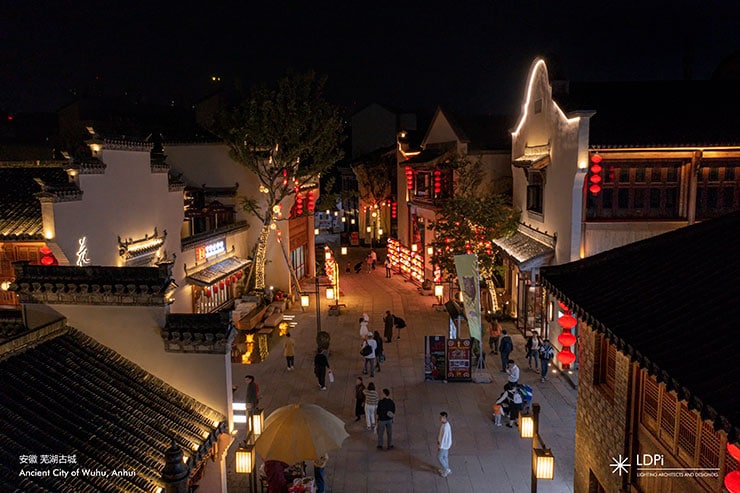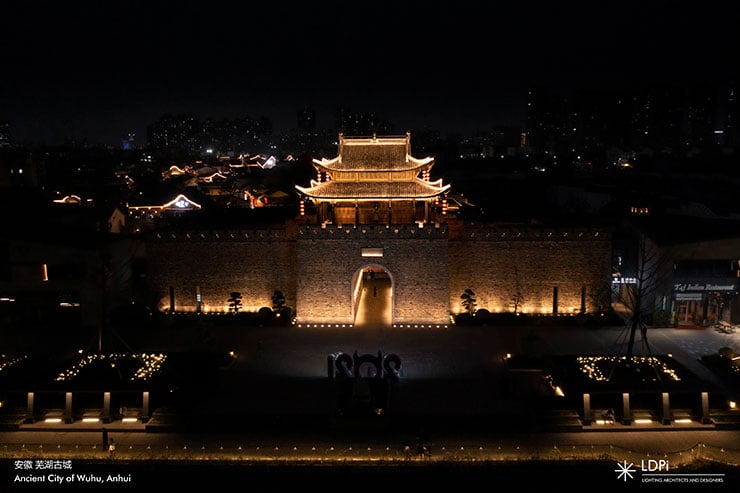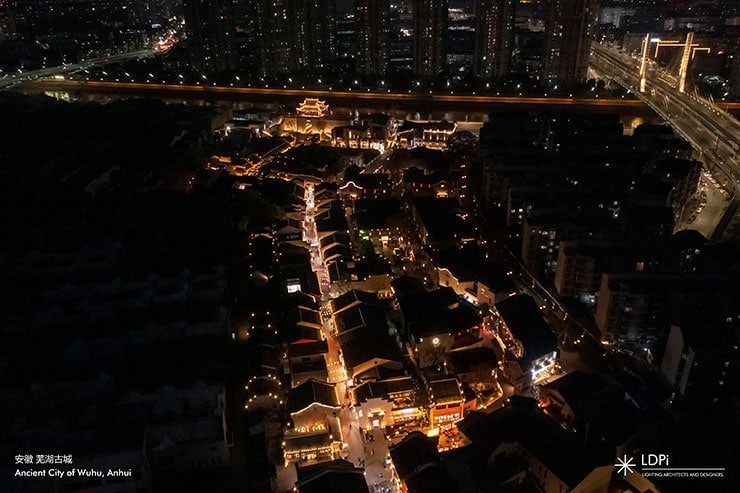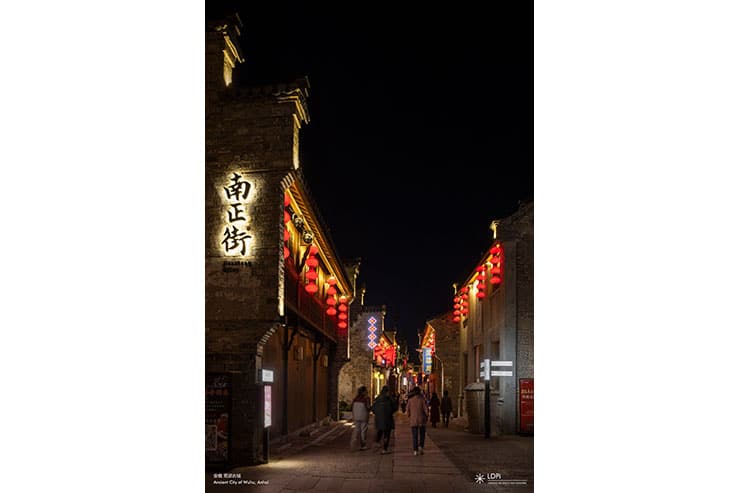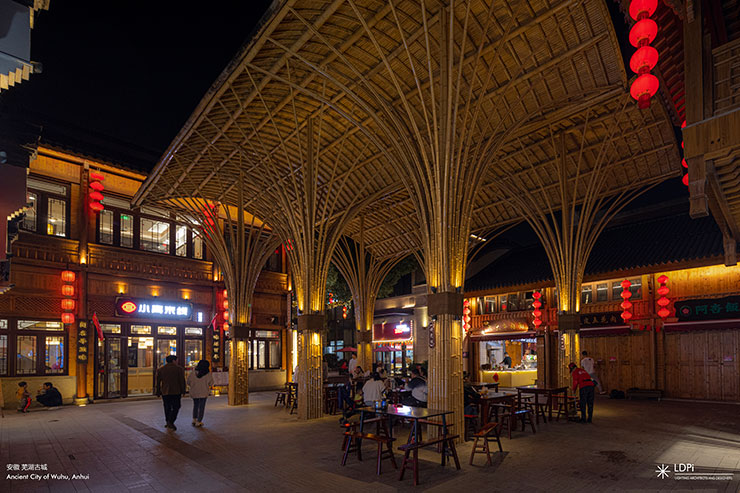- ABOUT
- JUDGING
- CONTACT
- MORE
- 2024 Entries
- Installations 2024
- Past Winners
- Subscribe
- [d]arc directory
- arc magazine
- darc magazine
Ancient City of Wuhu, China
ProjectAncient City of WuhuLocationAnh, ChinaLighting DesignLighting Design Partnership International, ChinaArchitectPeddle Thorp Architects, ChinaAdditional DesignLandscape design: Shanghai Shuishi Architectural Design & Planning CorpClientAnhui LandLighting SuppliersWeebPhotographyGao Han
The “Ancient City of Wuhu” is located in the Southwest of Wuhu (Jinghu district), at the junction of the Yangtze river with the Qingyi river. It is surrounded by the Huancheng North road, Huancheng East road, Yanhe road and Jiuhua Middle road. It was built during the Ming and Qing Dynasties (15th century onward), but it was also destroyed during the same period as the entire city was developing with Hui-style business and culture, but it also opened to foreign trade. After four years renovation, the ancient city of Wuhu reopened in early 2021.
The city is mainly composed of historical blocks such as Huajie, Nanmenwan and Nanzheng Street. There are many stores along the streets where bricked and wooden Hui-style buildings are mostly two-story high dwellings, shops on the front and factories on the back. Among them, Nanzheng Street formed during the Wanli period of the Ming Dynasty is the earliest commercial pedestrian street in Wuhu, with the style and features of a historical and traditional pedestrian street of southern China. The entire lighting is minimalistic and intends to reveal these features of the city.
Changhongmen is the South gate of the city faces the Qingyi river, resembling a rainbow, is the highest and brightest point in this area. Therefore the lighting emphasizes its structure while the city walls use continuous lighting paying tribute to all the parts that were destroyed during the history of the city.
The criss-crossing streets, lanes and alleys form the unique network of veins of the ancient city. On both sides of the gables, LED wall lights emitting light up and down are used, which not only portrays the shape of the building, but also provides functional lighting for the pedestrians.
As one of the important features of Hui-Style architecture, the corbel-steps appear in large numbers on the roof of the buildings. LED lights are arranged under each stack of gables and simply outline and reveal the details of the ancient corbel-steps at night.
Linear lights hidden under the eaves illuminate the second floor facade. The warm lights and red lanterns mirror each other, making the street more lively.
In some alleys, lantern racks are placed on sides, the warm-colored lights show through the lanterns, which contrast with the lanterns hung on the building.
Compared with other areas, the snack street area uses more lanterns to set off the commercial atmosphere. The dining area is also illuminated by floodlights in the middle of the ceiling column to illuminate the unique structure and provide functional lighting to people who enjoy the food below.
In addition to the ancient styles of the Ming and Qing Dynasties, some of the buildings constructed under the period of the Republic of China have also fortunately been preserved while a handful of new architectures have also come to life.
The lighting design of the preserved buildings in the business district is dedicated to maximizing view of their unique details and facade textures, allowing visitors to feel the quietness of this ancient city while the structures and shapes of the few new architectures are revealed as well at night.
